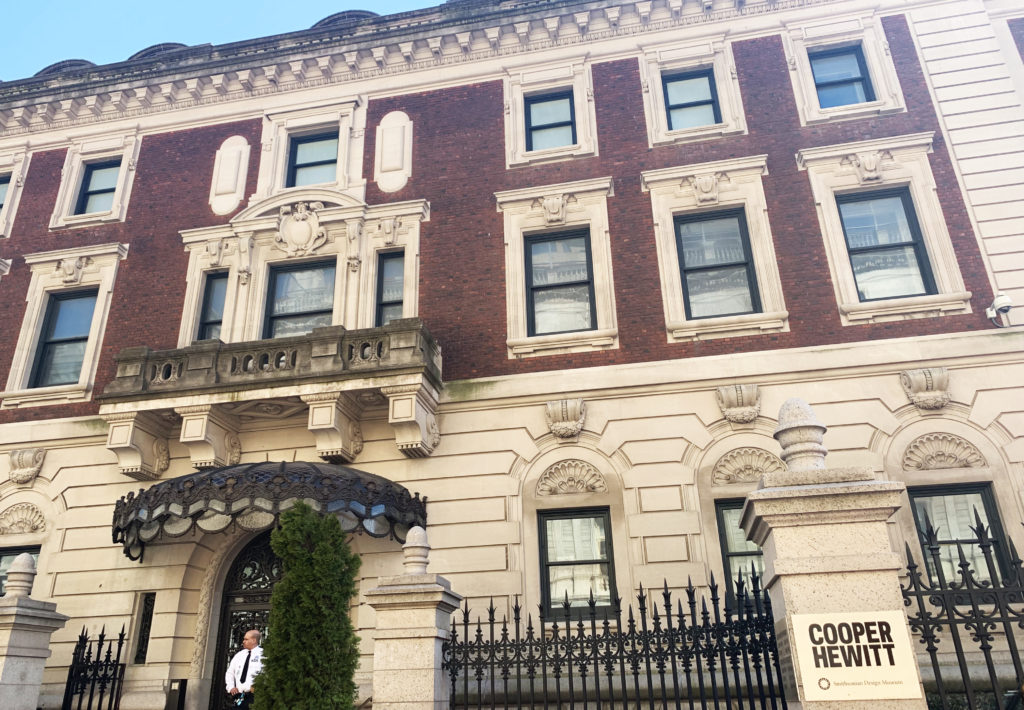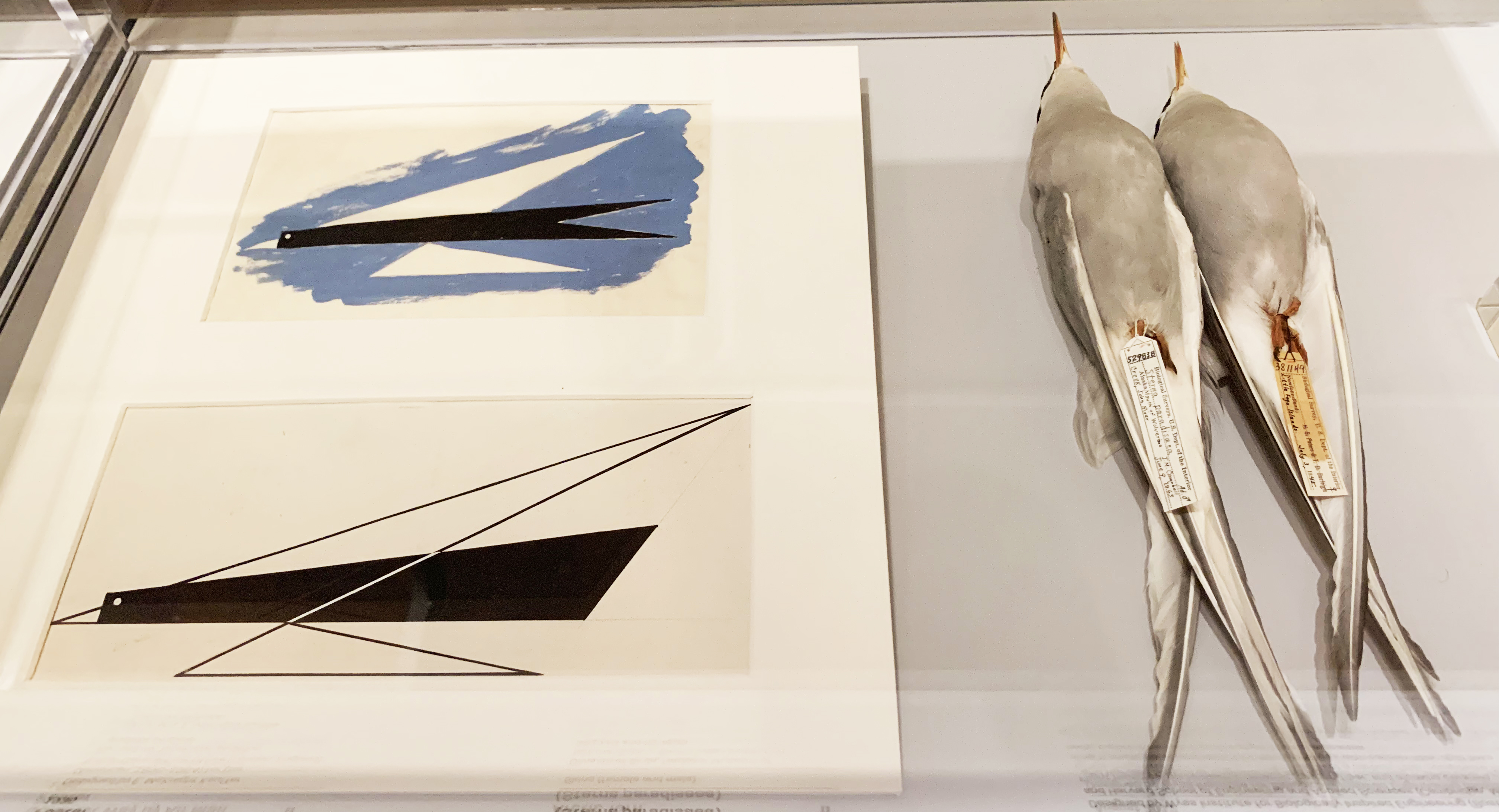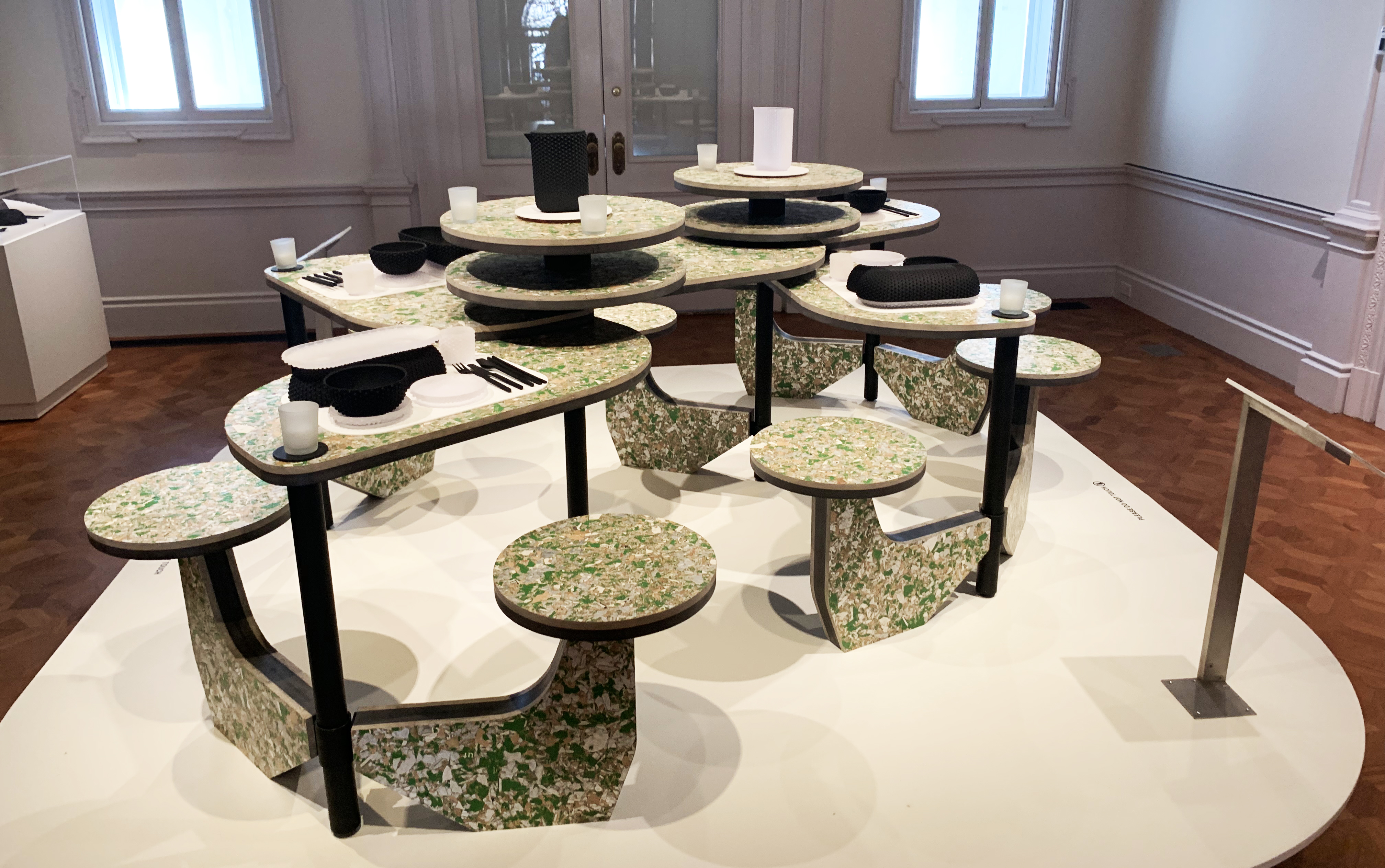The events are held in New York City almost every day. I’m glad to have a chance study here. Through the activities I attended, the most impressive event is the World Blockchain Forum.
A brief introduction of WBF: The World Blockchain Forum (WBF) was incorporated in New York in 2017. Located at Wall Street New York City, WBF focuses on the frontier of global blockchain technology, which is committed to building the “Davos Forum” in the field of informational technology. WBF strives to establish a platform to establish an interconnected and thriving social community to share the cutting edge resources of blockchain technology.
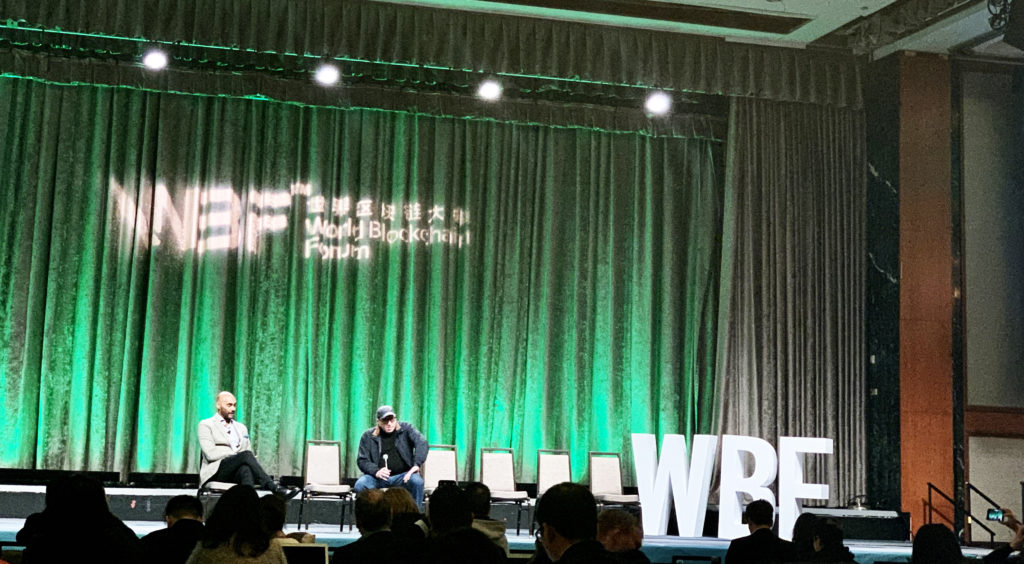
The event was held in the Hilton Hotel in 2018. The conference hall had a huge space to hold hundreds of people with green brand everywhere. STO and Stable currency was the main topic of this event. Unfortunately, I just heard the speech about the introduction part and the conversation with Jeffery Wernick who was the earlier Bitcoin investor and VC of Uber and Airbnb. Behind the hall, there is a room for the exhibition for the application of blockchain technology in different fields. Most of them are Game or Financial Companies.
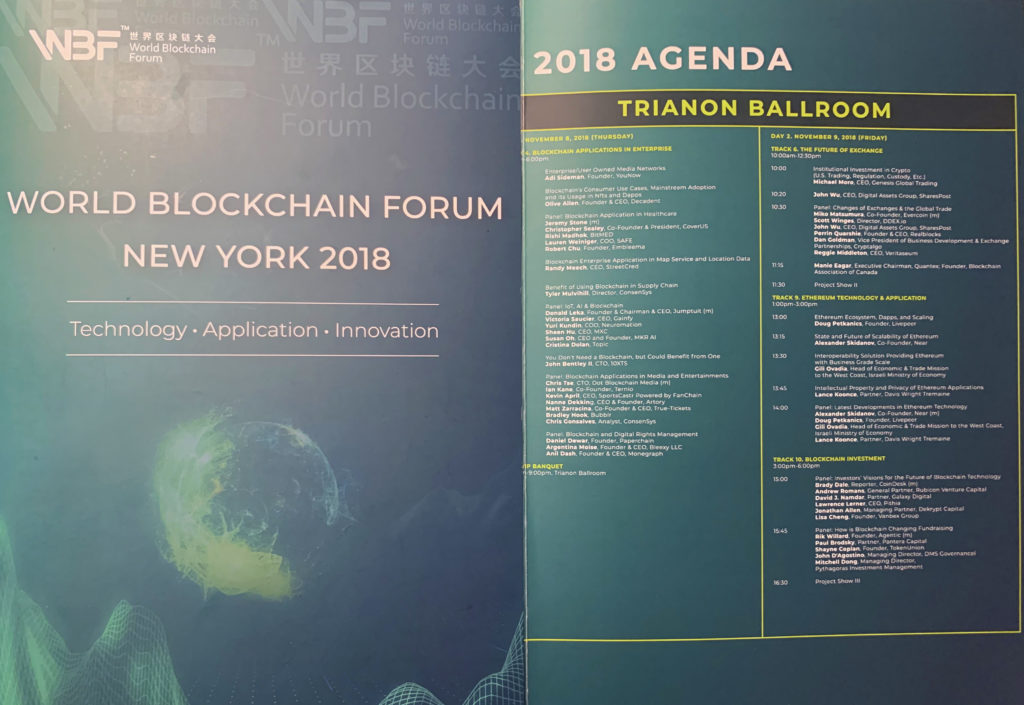
First, they start to talk about the founder of blockchain technology, Satoshi Nakamoto. He published the paper called Bitcoin: A Peer-to-Peer Electronic Cash System. However, no one knows who he is. People only know he is Japanese American. On April 20th, 2019, one bitcoin equals 5,317.67 $. Even though people start to doubt its value, they still trying to buy some bitcoins into their pockets. Actually, everyone hopes the bitcoin can maintain its value since investors have invested a bunch of money. Bitcoin’s price isn’t stable. I guess it’s one of the reasons to sell a Stable currency to poor money. For now, the most successful winners in blockchain are those people who brought the bitcoins at the very first time with incredibly low price. However, this will mislead people’s general understanding of blockchain technology, people may think that blockchain is only about trading bitcoins which creates a bias of this field.
From the basic definition of blockchain, Michael Crosby explained that, a blockchain is essentially a distributed database of records, or public ledger of all transactions or digital events that have been executed and shared among participating parties. Each transaction in the public ledger is verified by the consensus of a majority of the participants in the system. Once entered, information can never be erased. The blockchain contains a certain and verifiable record of every single transaction ever made. Through this view, the most obvious difference between blockchain technology and the conventional network is that blockchain is built by the decentralized system while the old network is controlled by the central machine. This difference gives the user a transparent database in blockchain technology. Once a block is built, the records in it can’t be modified. Plus, the blockchain serves a permanent record of all kinds of information on a blockchain network. It’s a revolutionary technology challenges the old network that database can be decentralized from the centralized server.

The blockchain technology has a huge potential value for many kinds of fields. It can be used for the banking system, healthcare, government, etc. As David F. Bailey said it’s hard to find an industry that can’t benefit from improved transparency, seamless execution of tasks and distribution of trust around the planet. People don’t know where blockchain technology finally triggers out but they still have faith in it. According to Jeffrey Wernick, the application in the blockchain that’s driving blockchain with the solution might not actually be blockchain but might be some of the derivatives that people who are trying to be to build decentralized scalable platforms that might not end up being on the blockchain. Therefore, people may not only use blockchain to trade bitcoins but also learn the way that blockchain deals with the database system which could provide a more transparent, more decentralized channel that may influence people’s living behavior. Take trading as an example, people can easily build trust by exchanging blockchain because it can’t be revised.
Nowadays, people from different fields try to manipulate blockchain technology to develop some creative way to solve a practical problem. Michael Painter, a senior program officer at the Robert Wood Johnson Foundation, pointed out health information infrastructure challenges keep us from solving our major healthcare problems. For instance, the lack of a useful, safe health data infrastructure dramatically inhibits our ability to harness new powerful technology, like artificial intelligence. Blockchain technology was just emerging when JASON tackled these health information questions, so it could not assess its promise or pitfalls. Blockchain technology, nevertheless, could arguably offer novel ways to get us closer to that elusive health care infrastructure-like helping with information exchange, privacy protection, and control. He was unsatisfied with the old information system because doctors can’t get the valid data to finish the healthcare development including artificial intelligence. What blockchain technology can provide is a block of solid useful data with trusted privacy system that solve their worries. Moreover, blockchain technology can also give contribute to complete global payment. For years, making global payments has been challenging for both businesses and individuals since bank fees associated with international money transfers continue to increase. In this sense, Rachel Wolfson, Blockchain technology and cryptocurrency journalist, points out that the application of blockchain technology is impressive for solving the main challenges facing international payments, McCaleb also has plans to make the Stellar Network to make a progress on that. If people from all over the world can make a deal with bitcoin, the world trade system will be more efficient and transparent.
Through this event, I recognized that blockchain technology draws big attention from society, not only because bitcoins become more and more expensive but also because blockchain technology has huge potential in many kinds of fields, such as financial service, healthcare, etc. I have faith that blockchain technology can make more progress in the future.
Work Cited
“World Blockchain Forum New York 2018 – the Premiere Blockchain Summit.” New York – World Blockchain Forum, newyork.keynote.ae/.
Michael Crosby, Technology: Beyond Bitcoin, AIR Issue No.2, June 2016
David F. Bailey, President, BTG Inc, Blockchain 2.0.
Michael Painter, JD, MD, is a senior program officer at the Robert Wood Johnson Foundation. Blockchain technology in healthcare: perfect answer or a new source of questions? Distributed, 03.
Rachel Wolfson, (Blockchain technology and cryptocurrency journalist), How the Stellar Network is reshaping the global payments industry.
